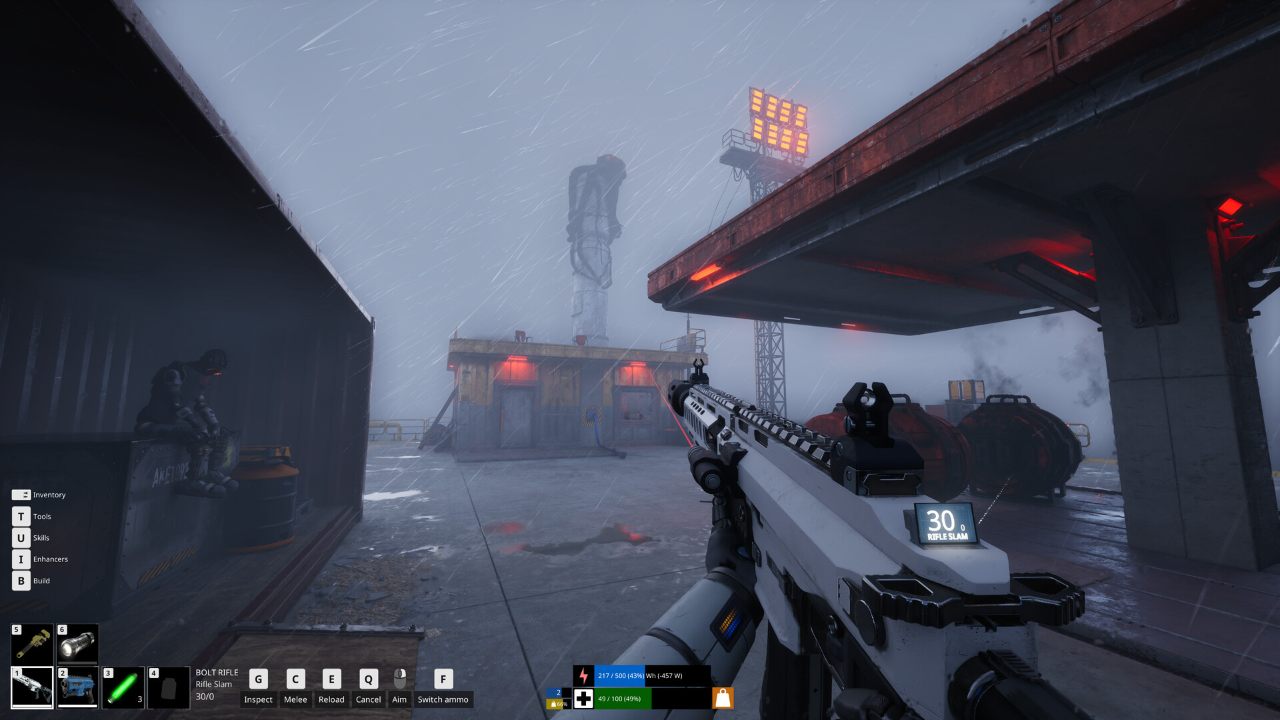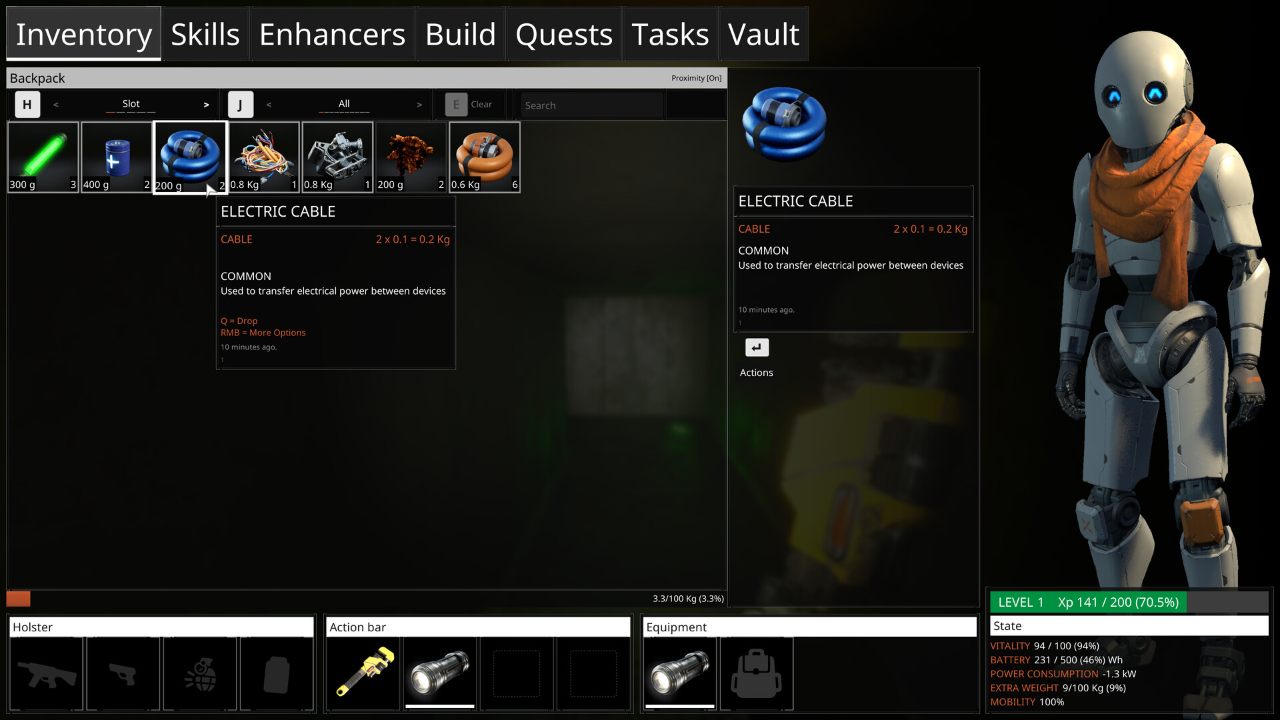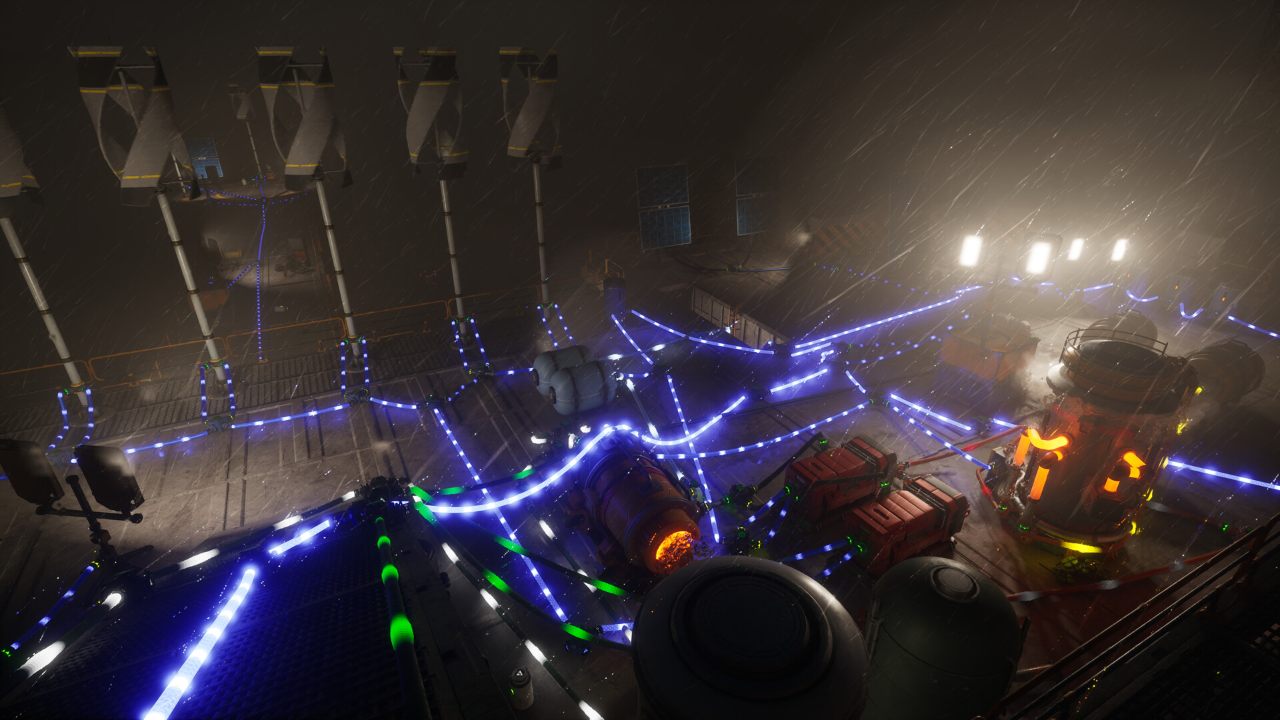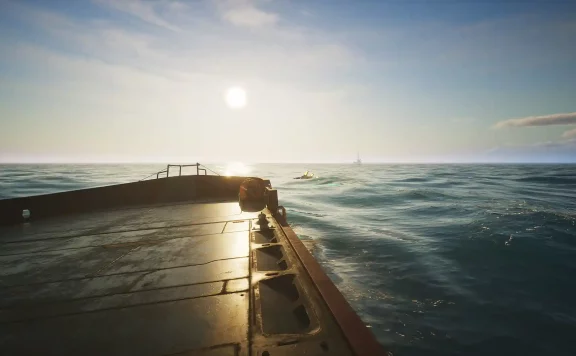It’s a bit odd to me that despite The Last Caretaker taking place mostly on a huge sea-faring vessel, the game it most reminds me of is Void Train. Both are about moving from node to node, raiding whatever you can carry, and then moving on, slowly developing your mode of transportation and your ability to fight and survive.
In The Last Caretaker you play a lonely robot adrift in a massive ship (though you’ll need to power it up and set it adrift in the opening moments). It’s not clear at first why you’re doing it or where you are, nor is it apparent what happened to the ship or even the world prior to the game. You will steadily piece together fragments of the past as you loot outposts at sea, gathering materials with which to craft essential items and improve your rig.
A large part of the game is based around puzzles, most notably requiring you to transfer energy from one place to another using extendable cables and battery housings. Some of these puzzles are tricky too – I spent a while scratching my head before I started to understand what was being asked of me. The purpose here is simply to have purpose, to learn what happened to the world while making your own way through it. It’s a lonely trip, too, and not without dangers.

The Last Caretaker features combat sections, but they’re arguably the worst part of the game and could even be seen as superfluous. From the useless melee attacks you’re dishing out on the weird enemies near the start of the game, to the unsatisfying guns you’ll be able to craft later, The Last Caretaker combat is rarely worth engaging with. It might have been better without it, given that there’s plenty to do otherwise.
Exploration is fun enough, as you solve environmental puzzles, gather what you need and then move on your massive boat. The early access nature leads to a handful of hugs and glitches, though these mostly seemed to affect movement and I saw no hard crashes. It’s a decent looking game, if unspectacular, and won’t trouble most mid-range PCs even when there is action going on.

Your robot avatar isn’t particularly quick on their feet, though, nor do they feel particularly nimble. It’s not what I’d call clunky, but it’s certainly ponderous at times. There’s also not a great deal of variety in locales, though that may change during the early access period. The use of lighting is effective though, especially when outside your ship.
A simple gameplay loop of battling rogue robots, collecting things, and then returning to your ship to craft, synthesise, and power up various essentials is enough to encourage you to keep pushing on, even when it gets tough. While you don’t really have time constraints, you will be forced to ensure you have enough fuel or other resources to continue your journey.

So much of The Last Caretaker atmosphere and appeal lies in its sense of solitude. You’re so alone that you come to rely on the radio for company, and there’s an undeniable sense of resigned determination to continue on with every new rusted ruin you dock at. While The Last Caretaker has action elements, it’s not an action game. It’s more contemplative than that, and there are long moments of calm and quiet where you just potter about your daily tasks like an actual robot. If anything, these moments are the best part.
As an early access title, The Last Caretaker offers an enjoyable, visually-polished experience with only a handful of noticeable glitches. It will appeal to those who want a quieter, busier adventure than many survival-crafters offer, but if you’re drawn to it by the combat shown in the trailers you’ll be disappointed by what’s actually here. It’s a thoughtful, steady, even melancholic, ride into the unknown rather than a thriller, but that at least makes it stand out in a crowded genre.
The Last Caretaker is in early access on PC now.


